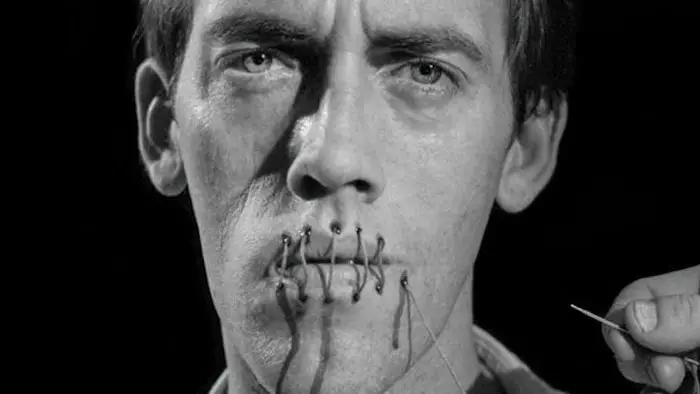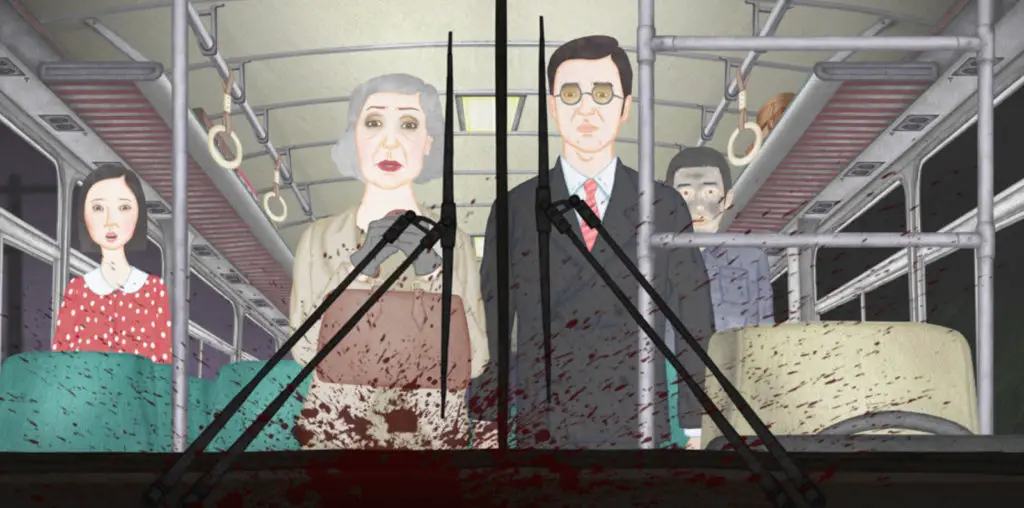
I wasn’t sure about this, but I love how the film is visually formatted, and I didn’t know if that was an homage to Wojnarowicz’s work because it had a collage-like quality and a lot of his work does too. Was that intentional?
In part for sure, we were definitely inspired by his work, and I would say the editor, Dave Stanke, who I had first worked with on Out of Iraq, has a really great visual sense, and I love working with him. When we started this project, he was the one I wanted to work on it, based on things he had done in the last film. In terms of how this all came together, Wojnarowicz re-used so much of his work in other pieces. It is a collage, but it’s an idea he may have tried many times–it might have started as a stencil, and then it evolved. Or even the tape journals were incorporated into the 3 Teens Kill 4 songs.
We had all the stuff. We had 10,000 images from just his negatives, his contact sheets, knowing that some of this stuff had been used in multiple ways by him already but in no set pattern. So it really freed us up to re-approach everything. Considering all the interviews were off-camera, and there wasn’t that much video footage, it just naturally evolved into being collage-like. I think we knew that in the beginning because we ended up having much more Super 8 film from Wojnarowicz’s collection than I anticipated, which was exciting. I didn’t even know there would be that much. There were rolls of Super 8 that hadn’t been developed. As I started asking the archivists at Fales Library if we could get it, they sent it out to process.

“Not just what was happening in the AIDS crisis but also how it affected black and Latinx communities.”
That’s really cool, that’s amazing. That sounds like so much fun to me. Now I’m wondering, in what ways do you think that Wojnarowicz’s political activism is still relevant today?
It’s interesting because we locked the film in February. In fact, we locked the trailer that’s out in March. Everything Wojnarowicz had talked about was so relevant up to that point. The thing about the One Tribe Nation and our pre-invented existence and all of these things he spoke about are ideas that he had before the AIDS crisis in some respect. Some of these things go back to ideas he was exploring in the ’70s. He really was observing and calling out the structures of power that led to this idea that politicians are using manipulation to maintain power. All of these things are so true today, and in the time, in the last seven or eight months, since we finished Wojnarowicz, it feels like it’s all come to life. It’s like that rage boiled over into society.
Between the lockdown and the masks and all of that and that building to June where there’s another wave of civil rights protests as there probably have been in a cyclical fashion for forty years. The way all these things in the last three and a half years by that point, all came to a head, not just through the pandemic but now the Supreme Court and all the efforts of the black community and Black Lives Matter. Wojnarowicz is considered an AIDS artist and a product of that time, but that was one facet of what he was calling out and the things that came about during the AIDS crisis and that apathy from the government, that was just all a sign of everything else. He was aware of that, and he understood the powers of representation. Not just what was happening in the AIDS crisis but also how it affected black and Latinx communities. That’s all incorporated into his work as well. Everything old is new again.

